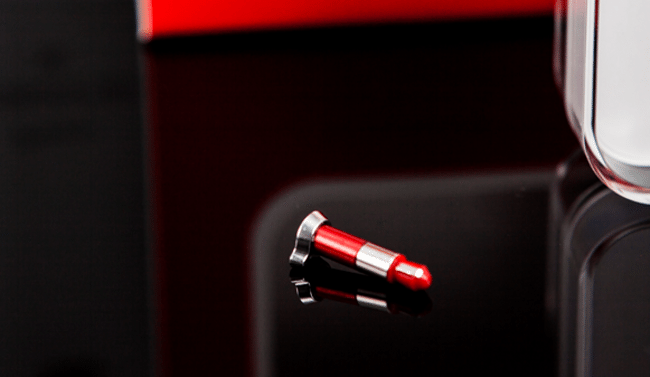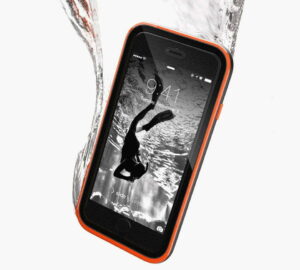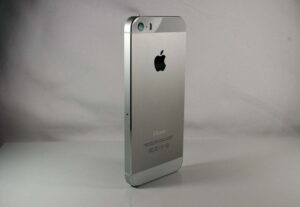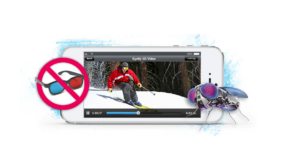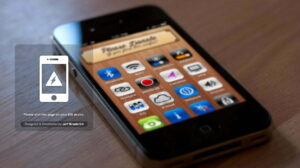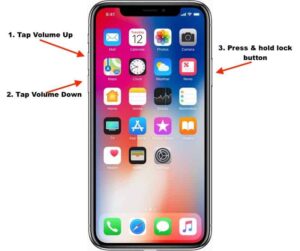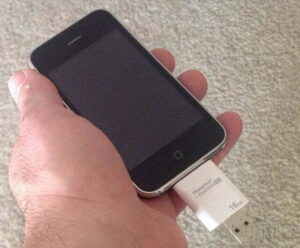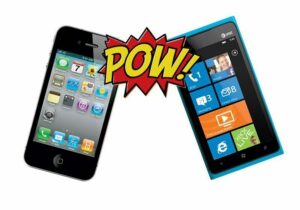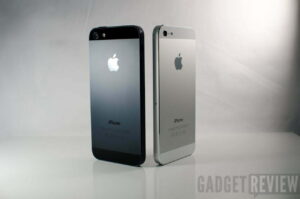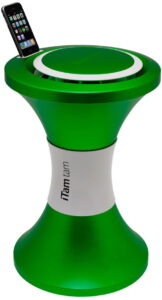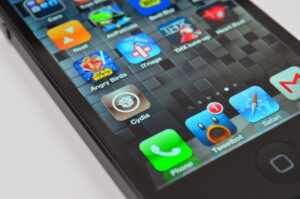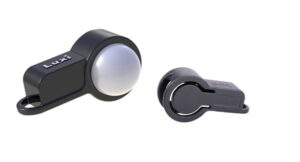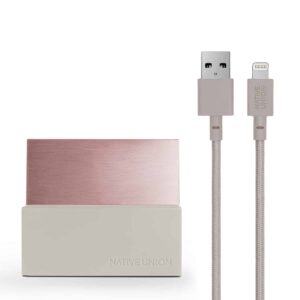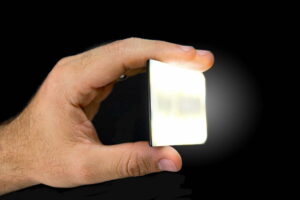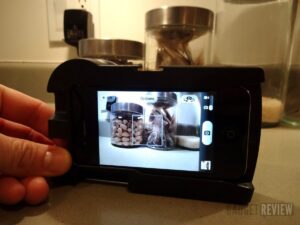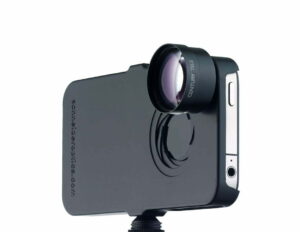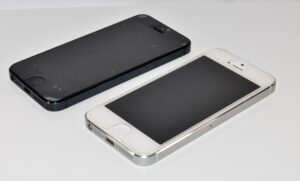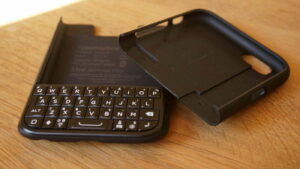When I was offered a piece of hardware that turned my iPhone into a laser pointer, how could I turn it down? That’s what the iPin, made by Canary Enterprise, is: a tiny laser pointer that plugs straight into the iPhone through the headphones port. The device isn’t perfect; it’s software-reliant and obviously uses one of the two coveted iPhone ports. And it’s still a pretty damn neat gizmo. Speaking of your iPhone, make sure it’s protected by looking at our review of the Slyder, gives your iPhone a secret compartment. When you invest in the best iPhone you can afford, you have to do everything you can to keep it safe.
The iPin is a class-2 laser pointer that’s rated for visibility at up to 50 feet. The red pointer is bright and perfect for presentations. It’s as good as the laser on the much more expensive Logitech R800, a full presenter in it’s own right with a USB plugin, no-software-required forward and back buttons, and a full timer. Yet the iPin actually includes all of those things too, just from the free downloadable iOS software.
As a standalone gadget, the iPin is useless. It needs the iPin app to turn the laser on and off. There’s no quick switch to activate it anytime; you’ve got to have the phone active and press the button in the app. This is particularly interesting considering that the laser can be activated and deactivated by turning it. When facing forward or back, it’s active and the laser can be turned on (and audio will attempt to play out from the laser). Turn it 90 degrees and it shuts off and can’t be used.
Related: Also check out our iPhone 5 review.
This most basic limitation is a real buzzkill, especially since the app itself is ugly, buggy, and not particularly pleasant to use. After a basic tutorial, users press the big red button to turn the laser on. I’ve found that some settings will actually stop the laser from functioning properly and require a reinstall of the iPin app. However, the app does include all the requisite tools for presentations, such as a multi-step timer and Bluetooth-enabled next and previous slide function. But if you’re one of those Keynote presenters who uses Keynote Remote for a heads up on your next slide, then you’ll need a spare iOS device.
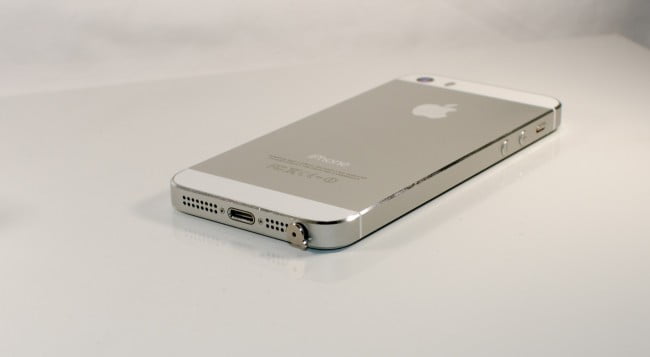
The other interesting thing is that, because the iPin pulls all of its power from the strength of the audio, you can actually (and this is hardly noticeable except at the extremes) power up and down your laser by adjusting the volume. Weird little nugget.
Related: If you need a device to help you provide better image, you might be interested in our Luxi Light Meter Attachment For iPhone 5 review.
The iPin was made for the iPhone 4/4S, which had the AUX port on the top of the phone, though it works just fine on the 5/5s as well. I tested on all of these devices without error or issue aside from those mentioned earlier. For presentations it did take some getting used to, especially with the 5/5s because it requires holding the phone upside down (the audio port is on the bottom of the phone).
My bigger concern was twofold: the size of the iPin and the use of the 3.5mm jack. For the former, the iPin is tiny to say the least. It has to be. That also makes it incredibly easy to lose, and while you could store it in your phone, I’ve found that I never use a Bluetooth headset for calls because of battery life and constant charging, nor do I use Bluetooth audio in my car because even with a 2008 fully-stocked Nissan Altima Hybrid, the tech isn’t built in. I use the audio jack constantly, in every car ride to listen to music, audiobooks, or the radio; at work for the same; or anywhere for longer than 5-minute phone calls. You may not have the same experience, though as the years have gone by I haven’t seen wireless Bluetooth headsets make any real headway for most consumers.
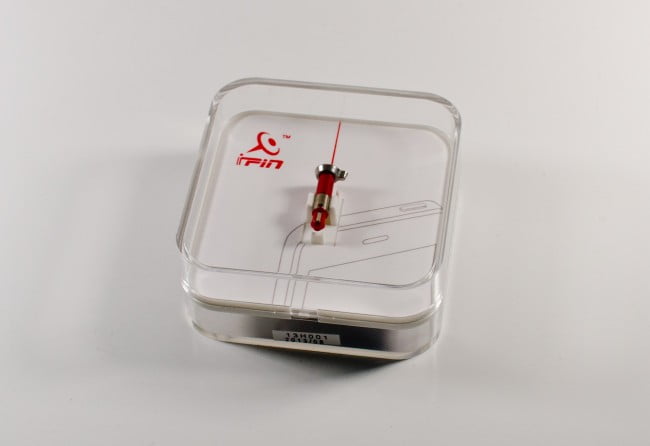
So storing the iPin is a bit of a nightmare (I keep mine in the original plastic box, since it has a nice holster for the itty bitty laser), especially for travel. Devices like the iPin really need to come with some sort of bag or lockable container for protection and to help owners remember. For every travel device I use today, from mice to presenters, every one has a case. Part of the reason is protection; the other 90% of that reason is the ritual of unsealing and resealing the device. If I didn’t take it out of the case, it’s still in the bag. If I didn’t seal it back, then it’s not in the bag yet. The iPin is clearly lacking this.
Removing it from the iPhone is also a serious problem. As a guy who cuts his nails, it’s almost impossible to remove the iPin without a tool after a trim. Heck, it’s hard at half-mast. The iPin is made to be seated well inside that port, but there’s no good mechanism to remove it. The women I asked to try it (with nails) didn’t want to after a brief attempt for fear of breaking their nails.
I love the principle of the iPin: provide consumers (in theory anyone should be able to use the iPin, so long as an accompanying app exists, though currently it only supports the iPhone if the name didn’t tip you off) with a high-quality laser powered by the device you always have with you. The problem is that on the iPhone, plenty of people don’t want to give up access to the audio port. They’d gladly do so for the 30-pin or Lightning ports, since those are only used for charging and data. However, forcing users to control the laser only by the software (which may well be the iPhone’s fault) is troubling. Having a low-quality app is unsatisfactory. Too hard to remove? Near damning. But taking up that audio jack? If you use it, that’s a killer. After a few weeks of use, I was much more comfortable leaving the iPin in its case, no matter how neat it was to use and show off. It just wasn’t worth it.
Bottom Line: Give lots of presentations and never use your iPhone’s audio port? Then this is perfect for you. Otherwise, it’s a bit much.
